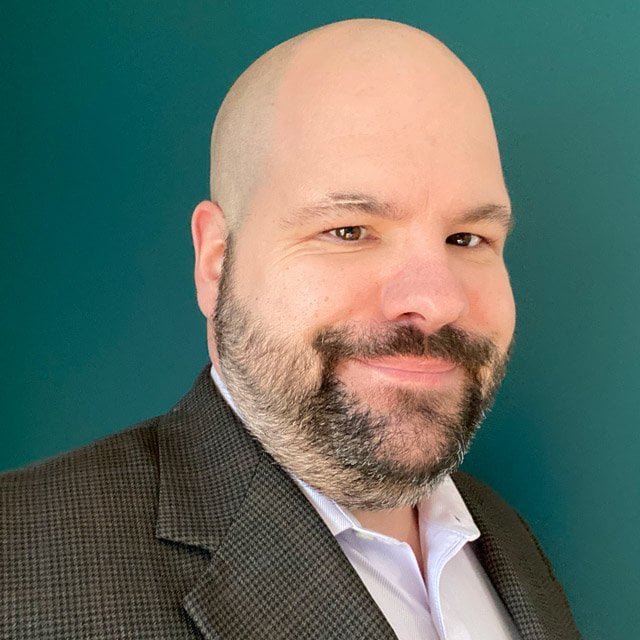Childfree Planning Turns Traditional Advice on Its Head

What You Need to Know
Jay Zigmont believes his firm is creating a new category to serve a large and growing demographic.
Childfree clients have different needs and goals when it comes to housing, insurance and estate planning.
Neither the training nor the fee structures of most planners are suited to these investors’ needs, Zigmont says.
This is the latest in a new series of columns about portfolio strategies, planning and asset management.
Giving financial advice to clients who will never have children involves more than simply tweaking the guidance geared to those who have or expect to have kids, according to Jay Zigmont, founder and CEO of Childfree Wealth in Mount Juliet, Tennessee.
In fact, advisors working with these clients may need to turn traditional planning on its head.
Living without children — whether by choice or circumstance — “starts changing all of the assumptions around your financial plan because you’re living a different life,” Zigmont told me in an interview.
Expectations about nest eggs and life insurance, for example, can differ dramatically from the standard assumptions. But that’s not all.
Legal matters, ranging from client privacy to questions about who will handle their long-term care decisions and estates, also come into play, as do societal pressures on those without children.
Zigmont believes his three-year-old firm is the first and only financial advisory dedicated to serving the 25% of the U.S. population who are childfree (by choice) or permanently childless (by circumstances outside their control).
“From a definition standpoint, that means people that will never have kids,” Zigmont says, noting this population doesn’t include so-called DINKYs, or “double income, no kids yet” couples. He cites a Michigan State University study of Michigan adults, which found that 21.64% were childless by choice.
“The interesting thing is if you become a CFP, there’s no mention in the CFP [coursework] of being childfree. It’s just not in the process. It’s not in the structure. So it’s a completely underserved, underrepresented and sometimes mistreated population,” notes Zigmont, who describes himself and his wife as a childfree couple.
“The joke is, can you have a niche that’s really 25% of the U.S.? And the answer’s no, but if you’re the only one serving them, we call what we’re doing category creation,” Zigmont says. ”We are creating a new way of doing life and financial planning for an audience that has previously not been served.”
The advisor, who has a book coming out later this year, “The Childfree Guide to Life and Money: Make Your Finances Simple So Your Life Without Kids Can Be Amazing,” expects strong growth for his firm over the next year, when he hopes to reach 250 clients. His youngest client is 23 and the oldest in their mid-70s.
Midlife Questions
“Our sweet spot is actually the people kind of mid-40s to mid-50s,” Zigmont says. “They hit what we call the childfree midlife crisis, which is when you hit your personal, professional, financial goals and then you’re like, ‘Now what?’”
When parents hit those goals, they often shift focus to their kids, but for childfree folks, “there’s no script to follow when you get to that point. And it’s like, ‘What’s the point of life? What do I want to be when I grow up? What do I want to do?’ And that’s where we do our best work.”
This crisis isn’t regret over being childfree but is more a question about what to do for those not following the “standard life script” — going to school, getting married, having kids, buying a house — and not prioritizing retirement or passing wealth to the next generation, Zigmont explains.
Childfree clients may ask: What’s the point of our money?
“We do life and financial planning,” Zigmont says. “We plan for their life first, then their finances. … It’s a completely different process.”
Goals for childfree investors look different, even core things like buying a house, he says. Childfree people tend to move frequently, and in that case, buying a house doesn’t make any sense.
“Living a life of childfree wealth means you have time, money and freedom to do what you enjoy,” Zigmont says.
One client recently announced his plan to move for a job offer in Asia. “And I’m like, all right, that wasn’t on your plan, but that’s just Tuesday for us. Just random. We’re going in a completely different direction. That’s normal.”
Ending With (Almost) Zero
Zigmont and his clients start with the end, which includes a vision that most advisors likely would find unusual.
“Most childfree folks are going to want to die with zero. The way I say it is, if my nephews get $10,000 or $100,000, that’s fine, but if they get $1 million, I made a mistake, because I probably should help them throughout their life,” Zigmont says.
Charitable clients who make contributions while alive can get tax breaks and end up with nothing in their estate when they die, “so if your goal is not to pass on money to the next generation, or to have a large nest egg when you die, that completely changes the financial planning process.”
Many advisors run Monte Carlo simulations to try to ensure clients don’t run out of money late in life. “And for our clients, we have to do the inverse,” Zigmont says.
Clients don’t literally aim to die with nothing. “We actually set up what we call a safety net for dying with zero, which is a plan for long-term care, put off Social Security till 70, and then we put aside some cash for cushion,” he says.






